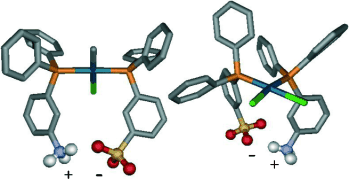An ionic interaction has been used for the first time to assemble monophosphane ligands. NMR spectroscopy and X-ray studies show that cationic and anionic triphenylphosphane derivatives form ion pairs and subsequently act as a ligand in various transition-metal complexes. The position of the ionic functional groups allows both cis and trans coordination of the novel assembly ligand in square-planar transition-metal complexes.
